25 Unseen Photos of the Challenger Explosion Found in an Old Man’s Attic
Can you imagine finding NASA secrets hiding in your grandpa’s attic? That is precisely what happened to the man who published the incredible pictures you’re about to see. After his grandmother passed away, the young man was left with the task of sorting through her belongings and clearing out the home she once shared with his grandpa (who died a few years earlier).
As you can probably imagine, the process stirred up plenty of memories, leaving him in that happy-sad state of reminiscence. In such a complex emotional condition, he was not at all prepared for the discovery waiting for him in the attic. As he flipped through a box of old photos, he found a series of pictures he’d never seen before. They were of the 1986 Challenger space shuttle explosion, but they were also clearly taken from very close range. In the slides that follow, you will find every one of the photos he discovered.
Grandpa Worked for NASA
Of course, there was plenty of coverage of the shocking Challenger explosion. However, these newly-discovered photos offer a vantage point never before seen by the public. Taken in perfect sequence, they reveal the precise timeline of events from launch to explosion.
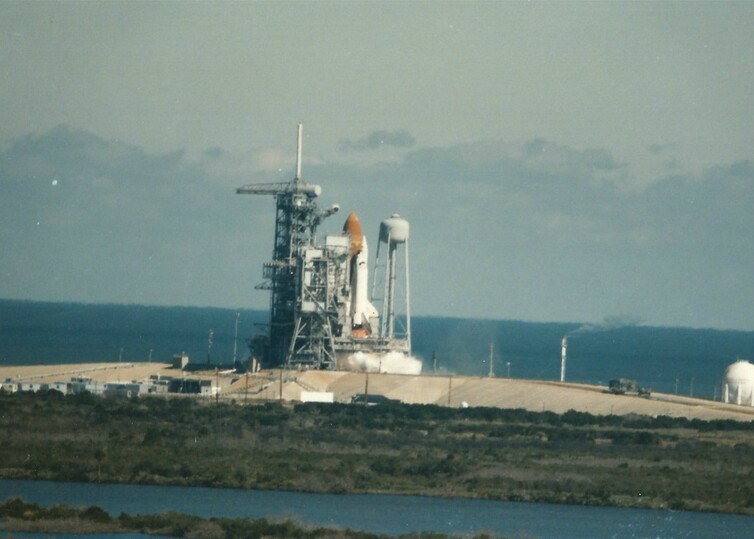
Source: meraridley123
The man’s grandpa had once been a NASA contractor, so he’d seen more than just the fateful Challenger launch. Over his years with NASA, he developed a lot of skills, one of which was snapping pictures with perfect precision.
Time for Take-Off
Just as this was not grandpa’s first space rodeo, it was not the Challenger shuttle’s first flight either. Between 1983 and 1985, it went on nine successful missions. So, there was no reason to suspect this day would be any different.
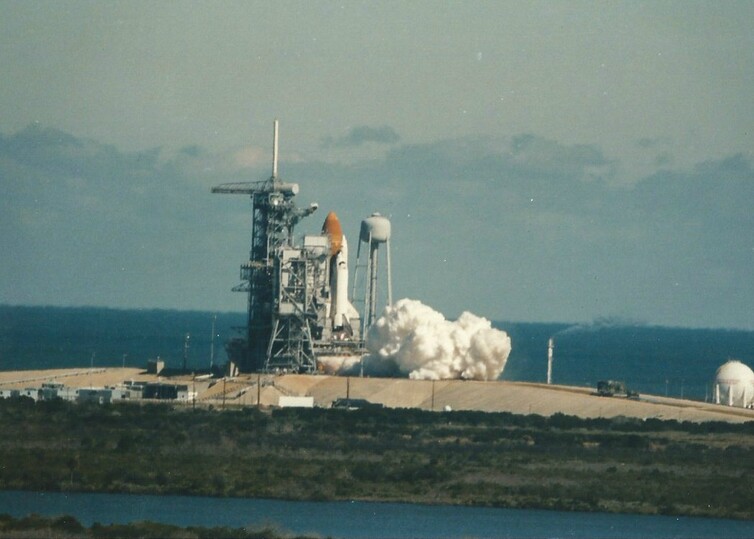
Source: meraridley123
As you can see, all appeared to be well at take-off. The Challenger had gone through this process plenty of times before, as had all the NASA employees involved. For the time being, everything was going according to plan.
A Complex Space Shuttle
When we say “everything was going according to plan,” that’s not entirely accurate. So far as everyone knew, nothing was wrong when this picture was snapped. The Challenger had gone on more flights than any other orbiter at the time. Surely this one would be just like the others.
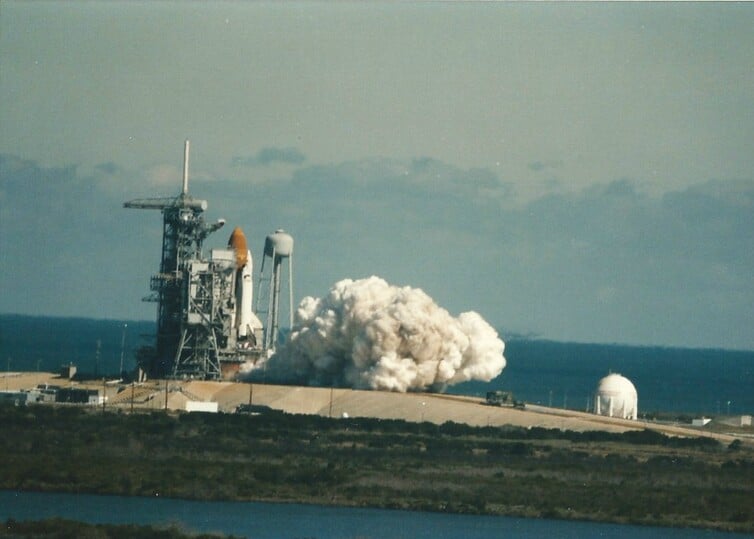
Source: meraridley123
However, space shuttles comprise many small parts that are each vital to the function of the whole. Unfortunately, a chain reaction of tiny changes was already underway when the picture above was taken, and it was destined to end in disaster.
A Historic Vessel
In addition to having nine successful missions under its rocket boosters, the Challenger also welcomed the first female astronaut in US history into space. It was an important vessel in more ways than one, but like other vehicles, it was susceptible to extreme changes in the weather.
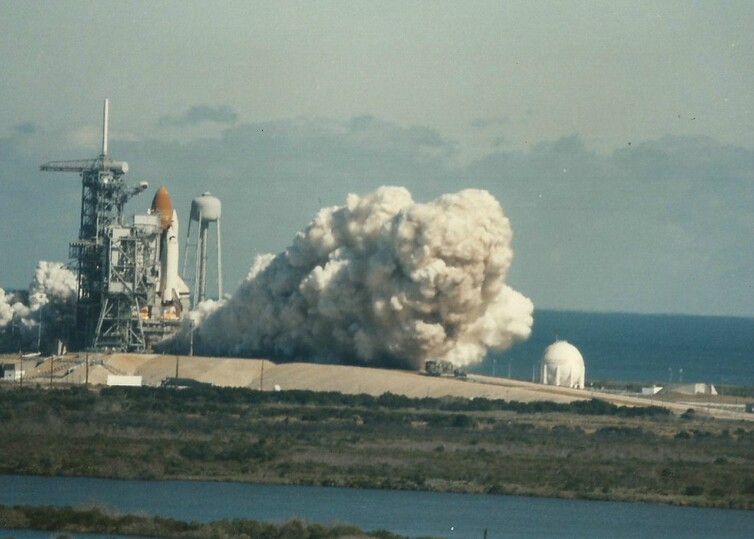
Source: meraridley123
If you’ve ever had your lock jam or another part of your car refuse to function on a particularly icy morning, you’ll have an inkling of what went on with the Challenger on its final launch date – January 28, 1986.
The Challenger Was a Busy Space Shuttle
January 28 marked the Challenger’s first trip into space for the year. However, it had 15 more flights scheduled for that year alone. Indeed, the Challenger was set to launch the Hubble Space Telescope into space. It would also be ferrying out the Ulysses and Galileo space probes.

Source: meraridley123
Sadly, this is not how the Challenger’s year went down. Instead, the Galileo space probe was delivered into orbit around the earth in 1989 by the Atlantis space shuttle. Meanwhile, the Hubble Space Telescope went out the following year (though it was intended to be in orbit seven years earlier).
The Challenger’s 10th Mission
Sadly, the Challenger’s 10th mission would also be its final one. As we hinted at earlier, it all started with the frosty weather on that January morning at the Kennedy Space Center in Florida.
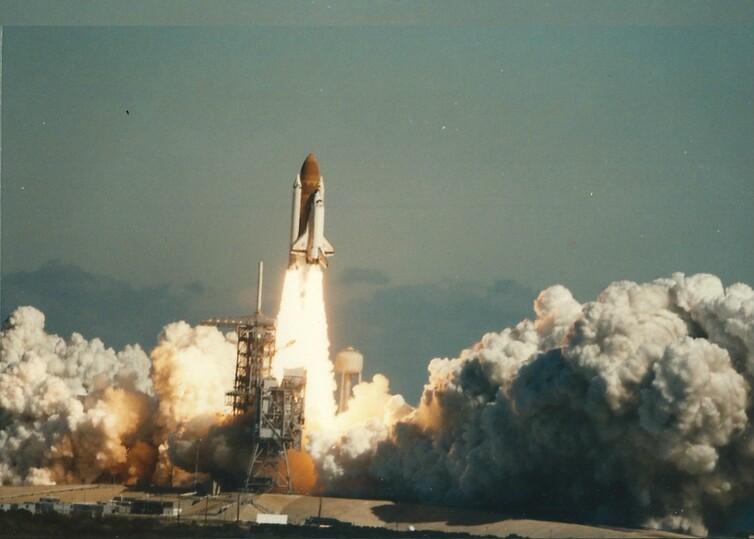
Source: meraridley123
Frosty weather alone can’t cause a space shuttle to crash. However, it can affect certain parts that are central to the functioning of the vessel. As these parts affect others, a chain reaction can occur, and in the Challenger’s case, that chain reaction was deadly.
Did Anyone Die in the Challenger Disaster?
Seven people boarded the Challenger on January 28, 1986. Though they were likely excited at the moment of launch, this feeling would not have lasted long. Tragically, they were all destined to lose their lives that day.
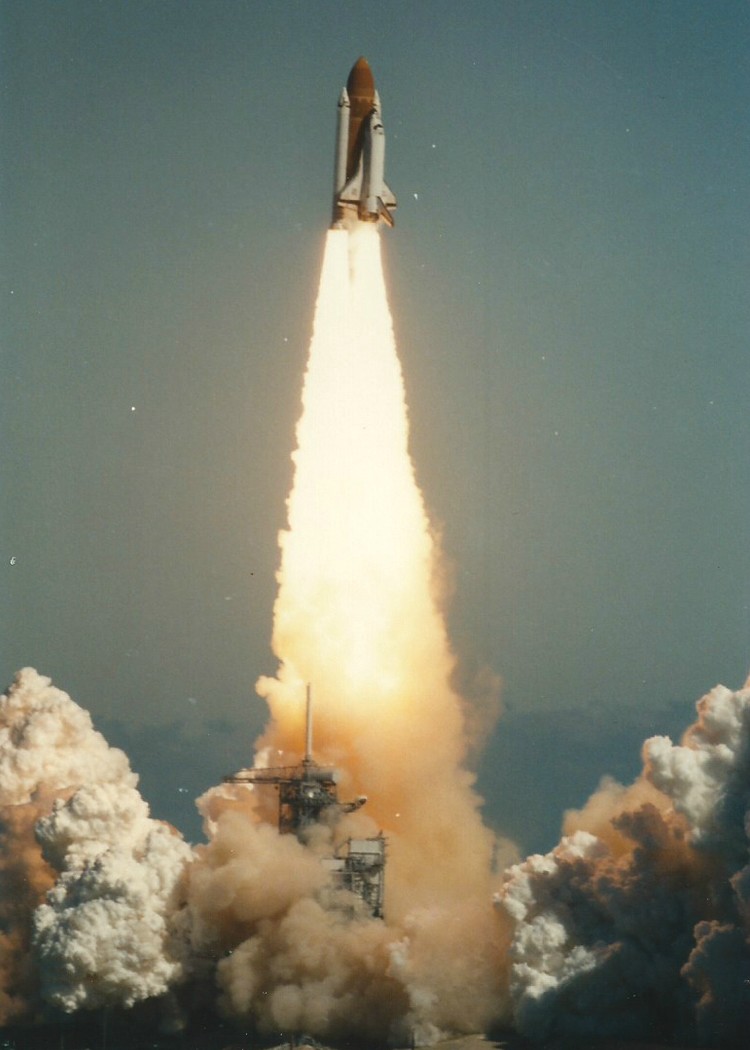
Source: meraridley123
Seven people died in the challenger explosion – all six of the astronauts on board plus one teacher from New Hampshire. Christa McAuliffe was the first teacher selected for NASA’s “Teacher in Space Project“ – an initiative that did not get off to a great start.
Teachers in Space
To be fair, the idea behind the project was quite cool. The intention was for McAuliffe to teach some classes in space that would be transmitted to students on Earth. However, in the wake of the Challenger explosion, the US government had little choice but to scrap it.
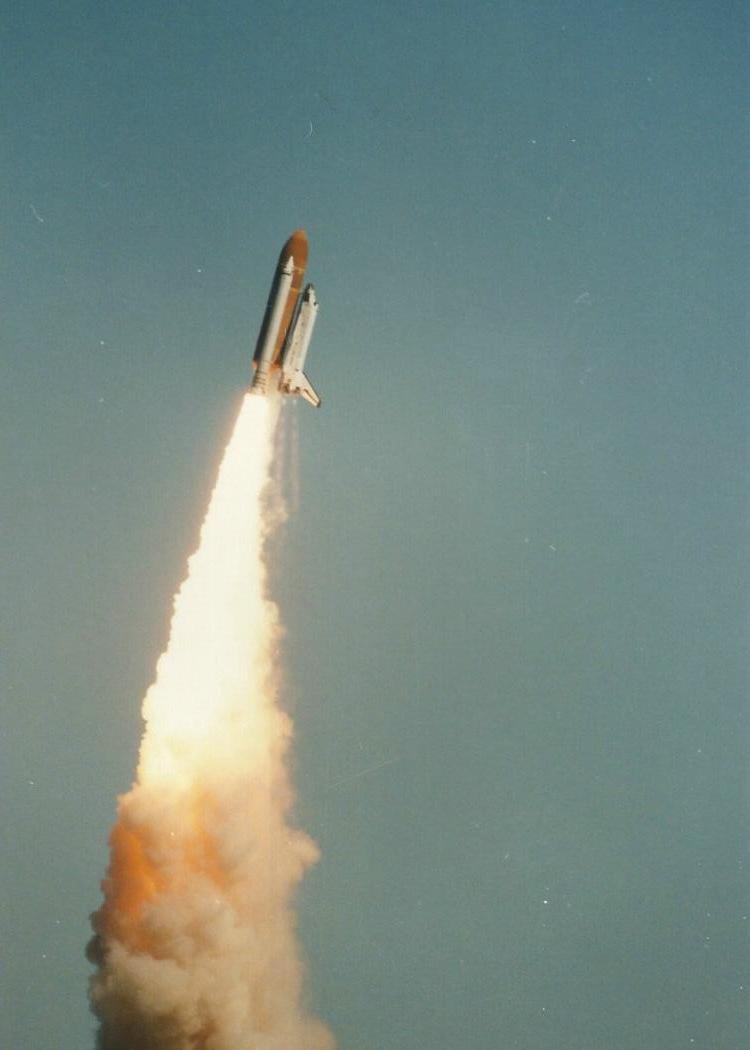
Source: meraridley123
In 1998, after more than a decade, NASA resurrected the initiative in the form of the “Educator Astronaut Project.” The first participants were selected in 2004 and finally flew in 2009. Thankfully, their mission was a success.
What Caused the Challenger Explosion?
The Challenger disaster all came down to problems with some of the smallest parts of the vessel. After a chain reaction of tiny issues, a joint in the right rocket booster ruptured, and that was the real breaking point.
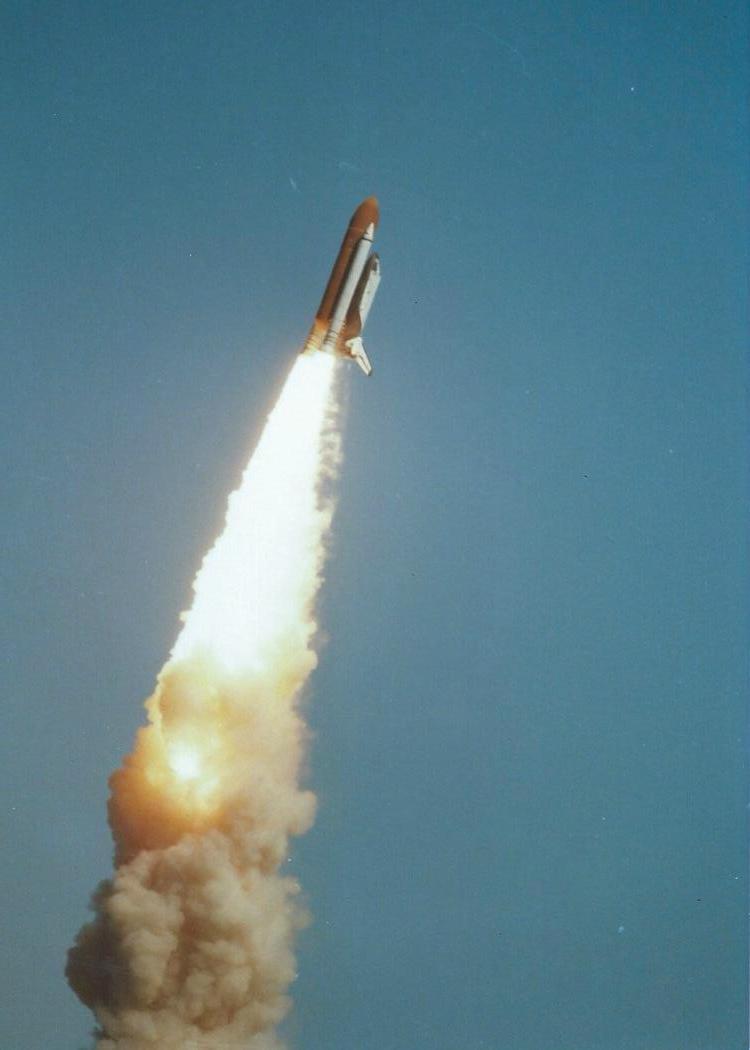
Source: meraridley123
When the joint ruptured, it led to the collapse of the external propellant tank. In turn, this collapse threw the entire shuttle off balance while it was traveling at a velocity that exceeded the speed of sound. Under such pressure, the shuttle was torn apart.
Space Shuttle Anatomy
Shuttles like the Challenger are built with a right and left solid rocket booster. The Challenger’s SRBs were 149 feet long and composed of four bolted-together sections. The joints are the weakest parts of the construction, presenting a spot where fire can potentially escape and cause problems during the launch.
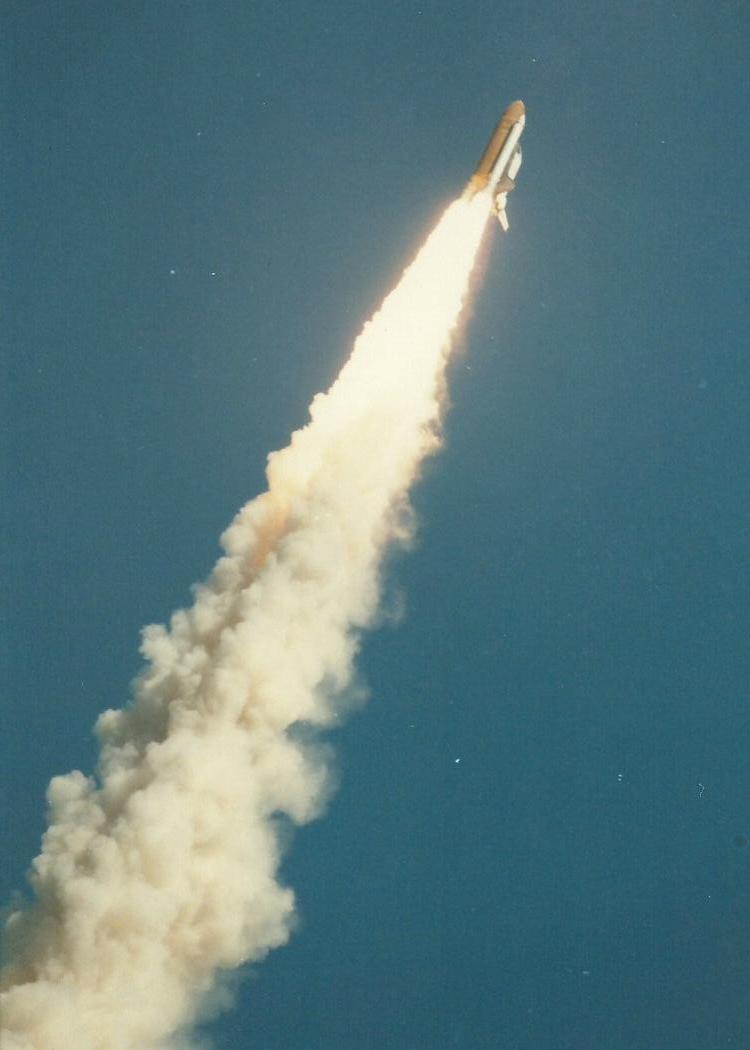
Source: meraridley123
As mentioned earlier, that part of Florida was experiencing record-low temperatures on the morning of the Challenger launch. The cold weather stiffened up the O-rings that seal the SRB joints. In turn, this reduced their ability to properly seal the joints.
Problematic O-rings
It’s crazy to think that small rubber o-rings play such a vital part in keeping space shuttles together. Unfortunately, NASA encountered several issues with its o-rings, and these problems persisted throughout the 1980s.
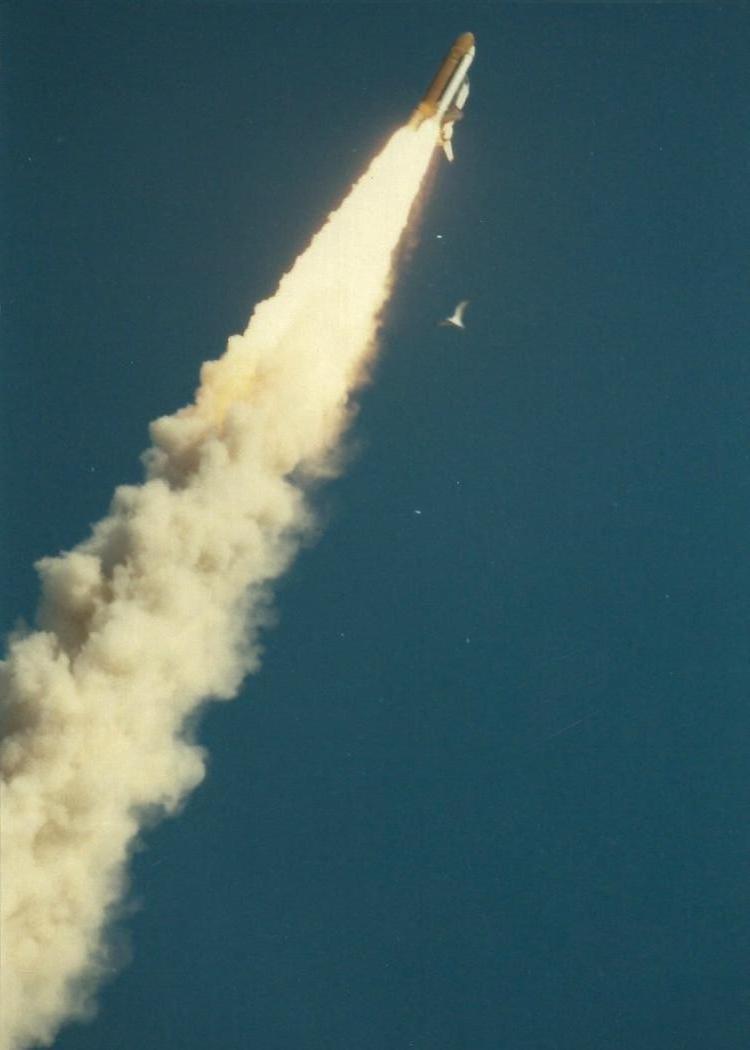
Source: meraridley123
Unfortunately for those on board the Challenger, the o-ring dramas had not yet been adequately addressed. So, due to one of the smallest parts on the vessel, their mission came to a catastrophic conclusion. In the image above, you see the shuttle at a moment when the crew inside would still have been none the wiser.
A New Space Shuttle Design
NASA was well aware of the o-ring problem and the fact that something had to change. A new design for the solid rocket boosters was underway – one that would rectify the problem with the joints. However, it was nowhere near completion when the Challenger was due to launch.
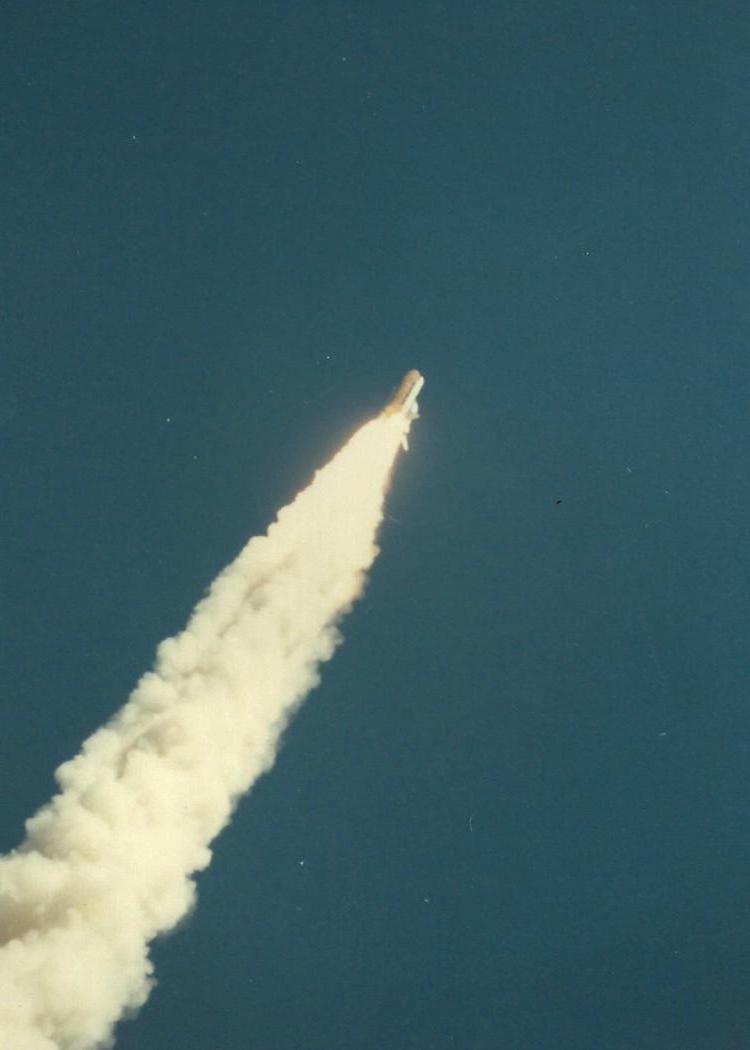
Source: meraridley123
Of course, the Challenger had also proven itself on nine successful missions, so they had every reason to believe that its 10th launch would deliver the same positive results. If only the weather had been warmer that day.
The Effects of Cold Weather on the Challenger
As it turns out, the odds were perfectly stacked against the astronauts that day. The weather wasn’t just chilly – it was the coldest day of the year, with a record-low temperature for the region of 36°F.
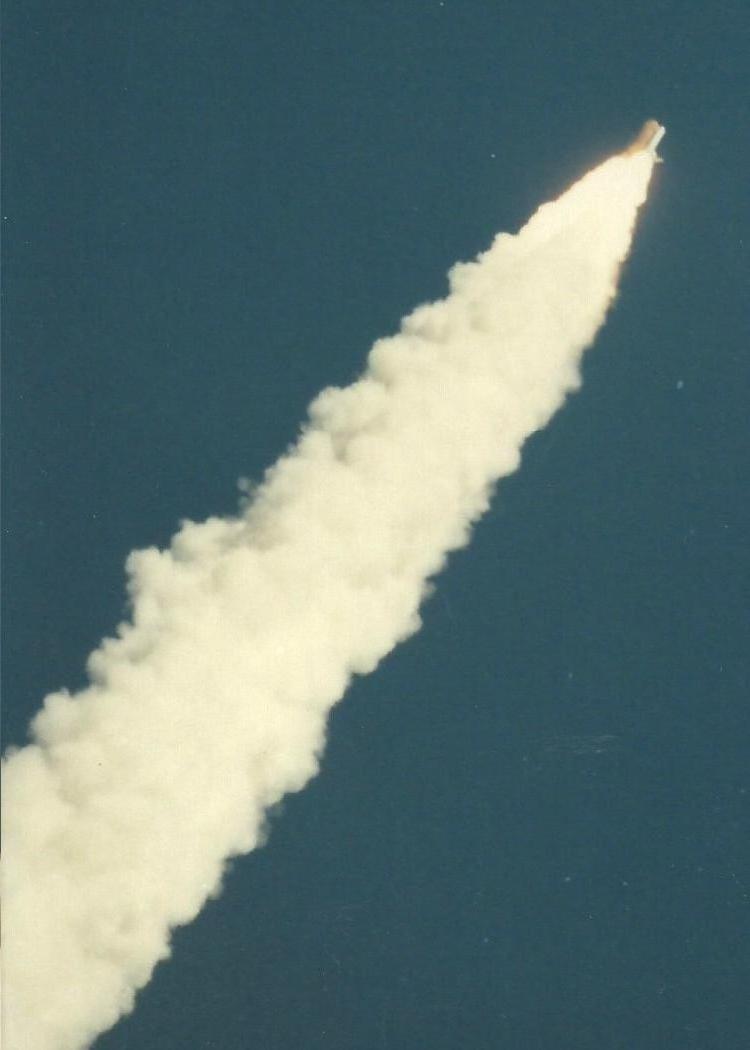
Source: meraridley123
Struck by these unusually cold temperatures, the o-rings stiffened up, weakening the joints in the SRBs. Finally, in the lower joint of the right solid rocket booster, one joint gave way entirely. And one joint was all it took to take the entire shuttle down.
Everything Fell Apart
As soon as the external propellant tank broke down, the entire shuttle was destabilized. Due to the speed they were traveling at and the air pressure outside, the orbiter was torn apart.

Source: meraridley123
At this point, the astronauts inside were likely trying to fight off panic while trying to figure out something – anything – they could do to save themselves. Unfortunately, they had no viable options on board. The Challenger was missing another key component – one that hadn’t seemed too important to anyone until that day.
No Escape
One thing many people are surprised to learn is that the Challenger had no means of escape for the astronauts should something go wrong. Apparently, NASA had considered including an escape mechanism. However, it was deemed unnecessary due to the predicted reliability of the shuttle and its launch protocol.
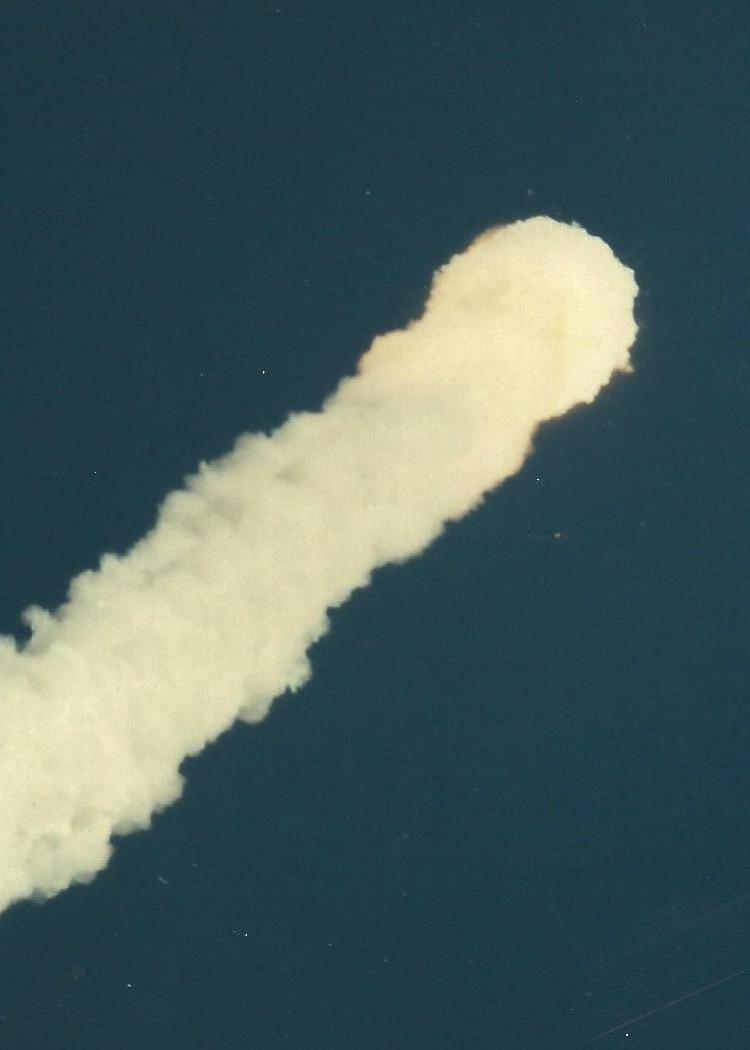
Source: meraridley123
Of course, there were relevant reasons for leaving the escape mechanism out. It would have been costly, complex, and cumbersome – all things engineers seek to avoid when it comes to space travel. Also, NASA had conducted many successful test launches, so the decision seemed justified.
Rapid Destruction
Though the pictures tell the story of the Challenger explosion in incredible detail, there’s a slow and peaceful vibe to slowly sifting through them and piecing together the tragedy. For us, it’s unfolding piece by piece. However, on the day, it all happened in less than two minutes.
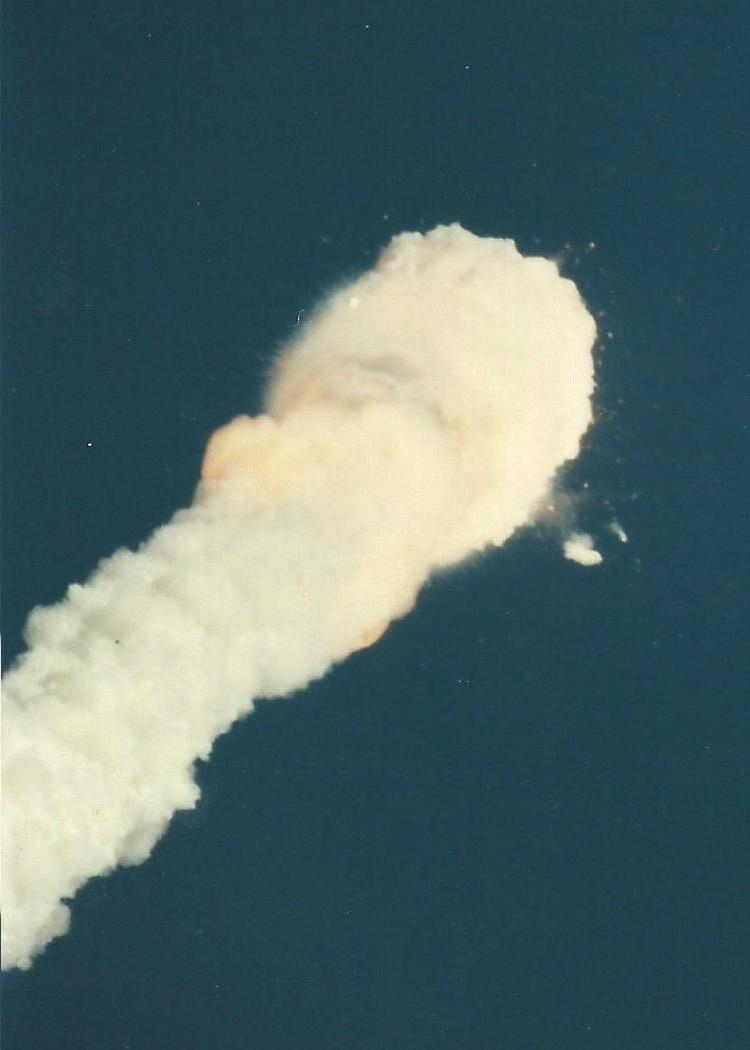
Source: meraridley123
Can you imagine the emotional journey the NASA employees went on that day? From elation at the launch, they were plunged in a matter of seconds into a fiery horror show that would never be erased from their minds.
Hints of a Problem at Lift-off
It’s hard to spot in the pictures, but a small amount of black smoke amid the white plumes hinted at the fact that one of the o-rings was burning. NASA personnel did notice this. However, the black smoke abated after about two seconds, so they hoped that some soot had built up and effectively clogged the leak.
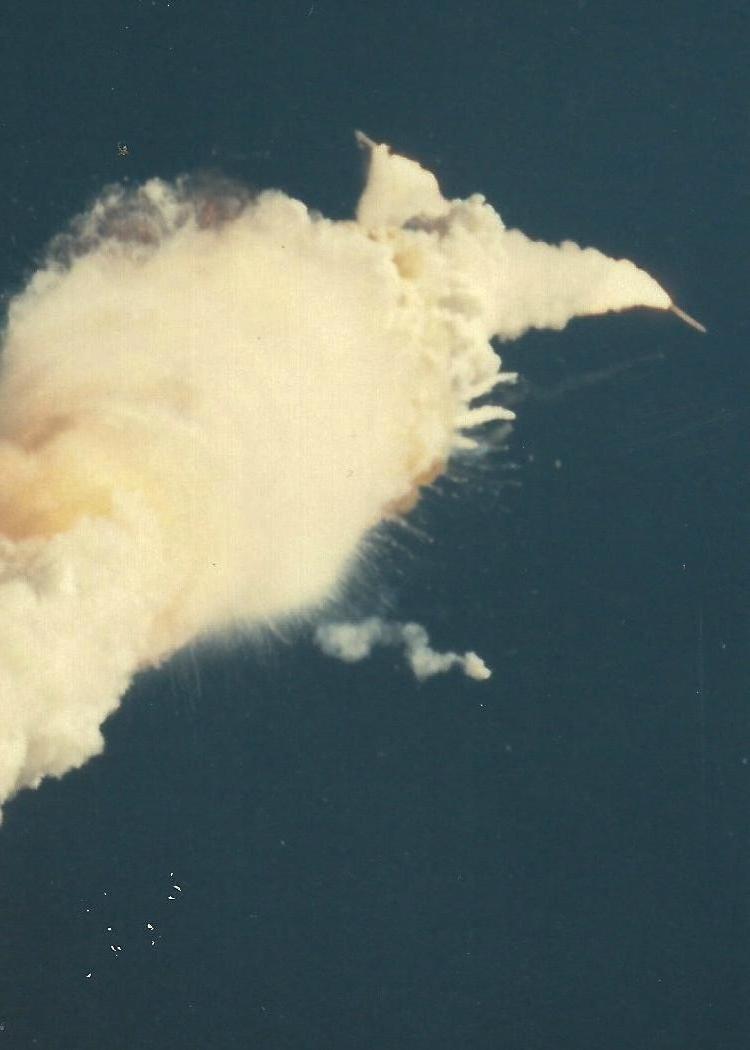
Source: meraridley123
With the gift of hindsight, we know that wasn’t the case. However, you can understand the hopeful thoughts of the NASA employees at the Kennedy Space Center that day. The last thing they wanted to witness was a catastrophe of this magnitude.
A Strong Gust of Wind Hit the Challenger
Around 40 seconds after launch, a powerful gust of wind hit the shuttle. This isn’t out of the ordinary, but given the problems that were already spiraling out of control within the shuttle, it proved too much for the Challenger to withstand.
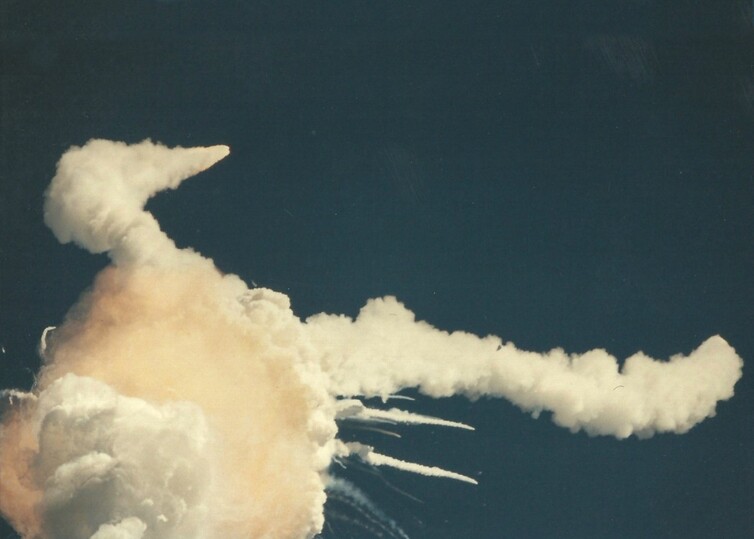
Source: meraridley123
It’s likely that (as many NASA technicians speculated) something had temporarily blocked the ruptured joint, but the gust of wind was enough to knock it loose. Around 20 seconds later, a flame shot from the ruptured rocket joint, burning a hole through the external fuel tank.
73 Seconds into the Flight
By the 73-second mark, the liquid oxygen and hydrogen in the external fuel tank had burned through the lower strut that attached the tank to the solid rocket booster. As fire and liquid oxygen gushed out, the bottom of the tank fell off.

Source: meraridley123
Thousands of gallons of liquid hydrogen poured from this new breach, and you don’t have to be a scientist to understand that this was a recipe for disaster. At this point, there was no chance of recovery for the doomed Challenger flight.
The Moment the Challenger Began Breaking Apart
With all the fuel combusting at once in the pressurized tank, the Challenger gained somewhere in the vicinity of three million pounds of thrust. This intense boost was far beyond what the Challenger was equipped to withstand, so it began to break apart.
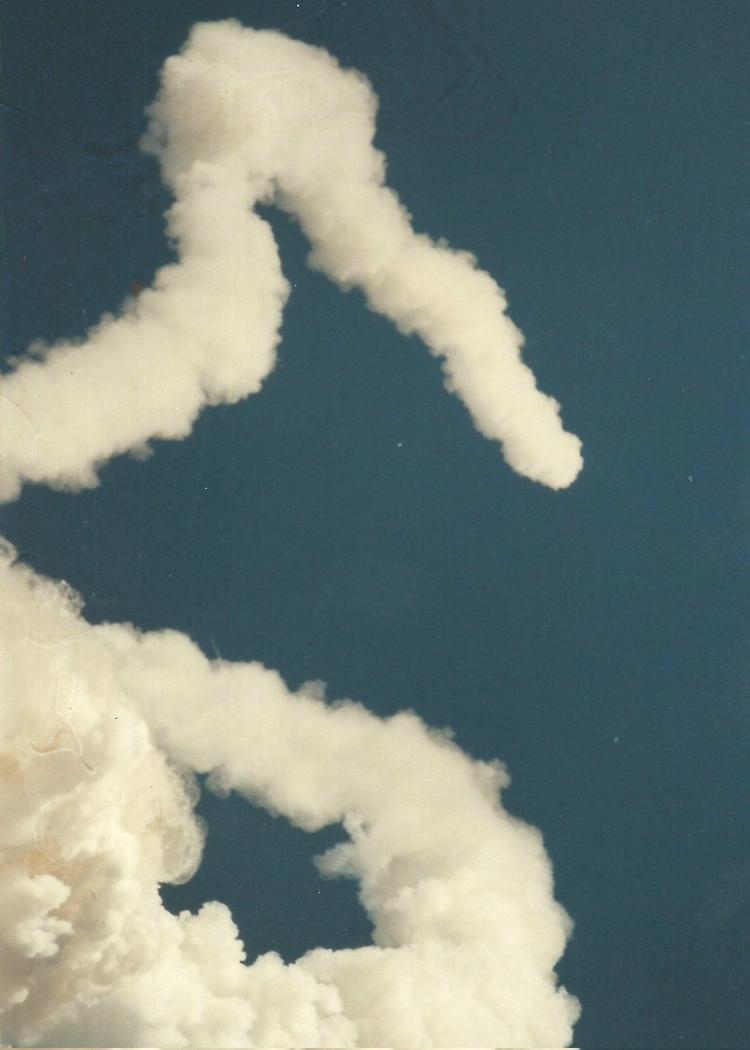
Source: meraridley123
We can only imagine what these moments would have felt like for the astronauts trapped inside. The best thing we can hope for is that it was over quickly and that none of them suffered.
The Fireball
The fireball you can see in the next two images was created by fuel from the external tank. As it spilled and burned in mid-air, it blew out into this fireball effect. One thing that surprises us is the fact that the cameraman remained steady throughout, capturing each moment of the tragedy with perfect clarity.
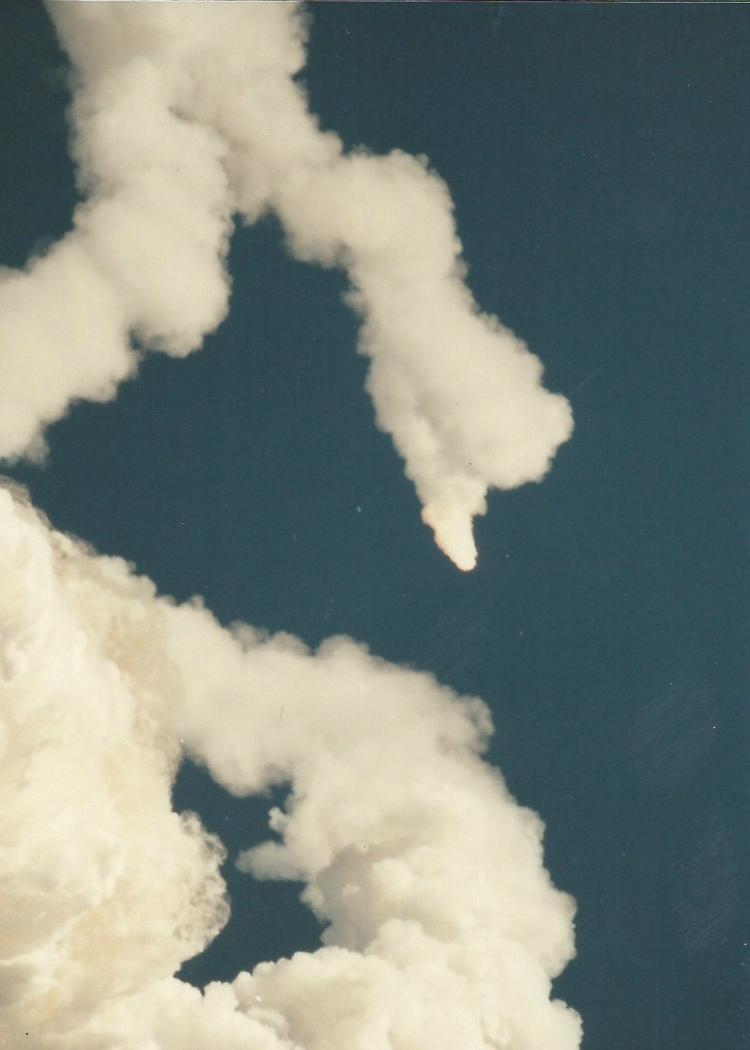
Source: meraridley123
You can feel his steady hand through the well-framed shots. However, he surely would have been operating in a state of shock and horror as the shuttle blew apart in front of him.
The Challenger Was Pushed Off Course
That is, perhaps, why the old man kept these pictures a secret for so long – hidden away in his attic where they couldn’t serve as a reminder of what he witnessed that day. We imagine it wasn’t a story he enjoyed telling.

Source: meraridley123
As for the Challenger, by the time this photo was taken, it had been pushed off course but was still traveling at a shockingly high Mach 2 speed. In other words, it was traveling at twice the speed of sound.
Where Did the Challenger Crash?
Since it was breaking apart while traveling at twice the speed of sound, the Challenger didn’t fall to the ground in a single neat pile. Instead, its parts scattered, with much of it landing in the Atlantic Ocean.
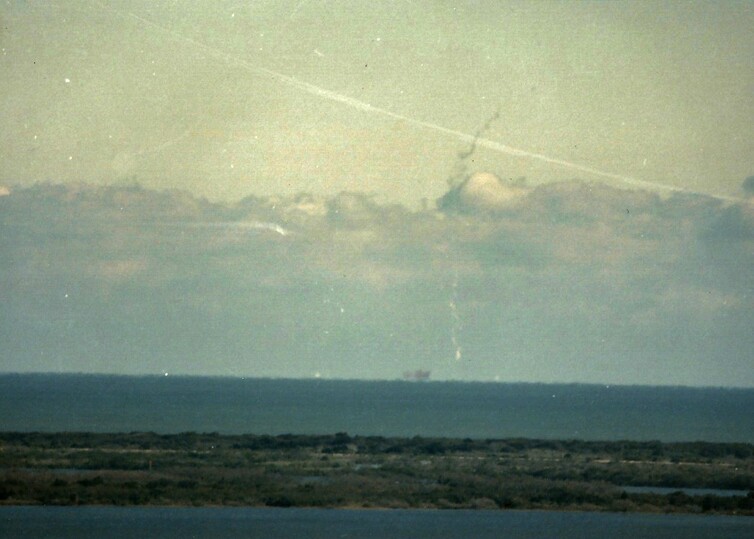
Source: meraridley123
On top of all this, NASA couldn’t even launch the recovery mission right away. Pieces were still falling from the sky, so they had to hold the recovery teams back to ensure their safety. After all, they didn’t need a second tragedy that day.
No Survivors
The crew compartment was one of the pieces recovered from the Atlantic Ocean. It had struck the surface of the water at a speed of more than 200mph, so no one inside had a hope of surviving the impact.
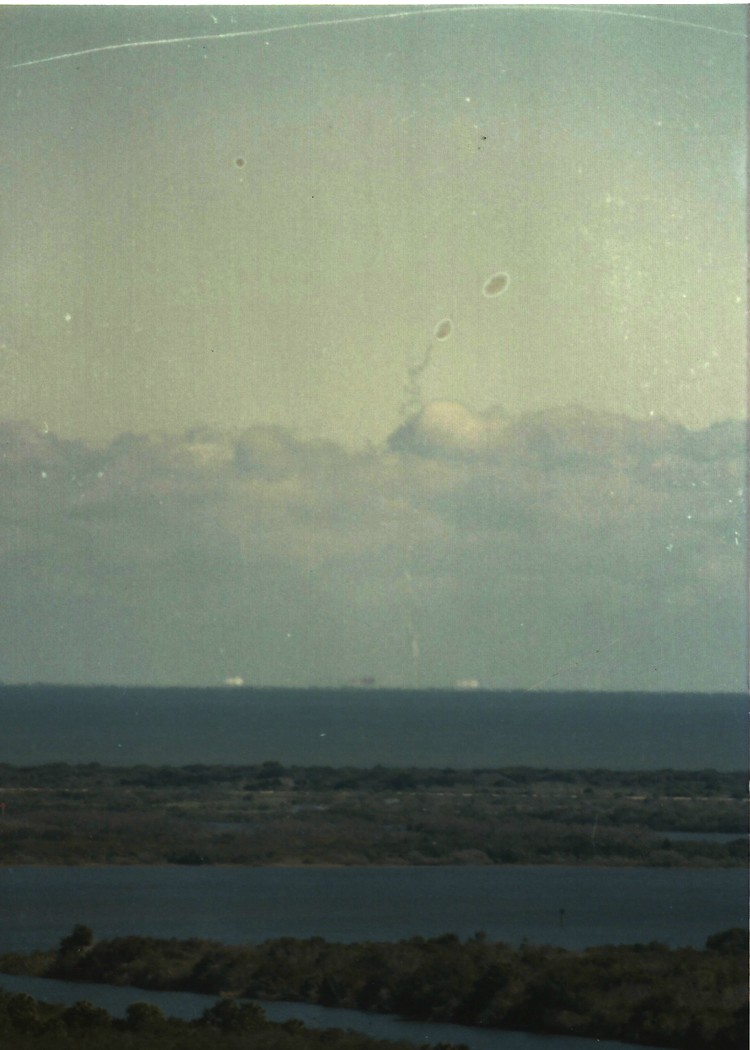
Source: meraridley123
The recovery mission ended up being a complex operation that required support from the US Navy and its submarines. The ground recovery was complete by February 7th – ten days after the crash. On February 8th, the search for debris in the ocean commenced.
The Aftermath of the Challenger Explosion
As you’ve probably already figured out, safety became a bigger priority for NASA after this horrific mission. The Challenger disaster made escape systems non-negotiable, so astronauts now have a better chance of survival in case of a disaster.

Source: meraridley123
The Challenger explosion was an undeniably tragic moment in the history of space exploration. However, it’s heartening to know that it did, at least, inspire the creation of safer space shuttles. Indeed, this tragedy has inspired incredibly helpful advances in the fields of engineering safety, ethics, communications, and decision-making.
